|
|
|
Sort Order |
|
|
|
Items / Page
|
|
|
|
|
|
|
| Srl | Item |
| 1 |
ID:
170571
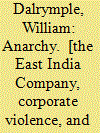

|
|
|
|
|
| Publication |
New Delhi, Bloomsbury Publishing, 2019.
|
| Description |
xxxv, 522p.: mapshbk
|
| Standard Number |
9781526618504
|
|
|
|
|
|
|
|
|
|
|
|
Copies: C:1/I:1,R:0,Q:0
Circulation
| Accession# | Call# | Current Location | Status | Policy | Location | IssuedTo | DueOn |
| 059853 | 954.03/DAL 059853 | Main | Issued | General | | C003 | 31-Jul-2023 |
|
|
|
|
| 2 |
ID:
114010
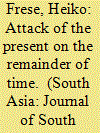

|
|
|
|
|
| Publication |
2012.
|
| Summary/Abstract |
Using the example of a local chronicle from early nineteenth-century Orissa, this article discusses the structure, content and strategy of selected historiographical texts of the period. Contemporary events and the immediate past can be identified in the texts and indeed govern their plots, reflecting a new representation of reality in historiography of this kind. Thus, the changing hegemonic order of such texts-where content begins to override form-mirrored the changing political world. Colonial discourse started to soak into Indian historiography.
|
|
|
|
|
|
|
|
|
|
|
|
|
|
|
|
| 3 |
ID:
177791


|
|
|
|
|
| Summary/Abstract |
The presence of a curious Iranian in Bombay in 1801–1804 resulted in an unpublished extensive diary, a record containing much valuable data about urban development and business relations in this harbour city. The author’s daily commentary and precise notes, compiled over the first 3 years of the nineteenth century, constitutes an unusual archive from colonial times, providing information about Bombay and its Parsis, as well as the role of Persians in the economy and politics of India under the East India Company (EIC).
|
|
|
|
|
|
|
|
|
|
|
|
|
|
|
|
| 4 |
ID:
032469


|
|
|
|
|
| Publication |
Cambridge, Cambridge University Press, 1963.
|
| Description |
vii, 363p.Hbk
|
|
|
|
|
|
|
|
|
|
|
|
Copies: C:1/I:0,R:0,Q:0
Circulation
| Accession# | Call# | Current Location | Status | Policy | Location |
| 007937 | 942.05/HUS 007937 | Main | On Shelf | General | |
|
|
|
|
| 5 |
ID:
028761
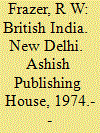

|
|
|
|
|
| Publication |
New Delhi, Ashish Publishing House, 1974.
|
| Description |
xvi, 399p.: ill.hbk
|
|
|
|
|
|
|
|
|
|
|
|
Copies: C:1/I:0,R:0,Q:0
Circulation
| Accession# | Call# | Current Location | Status | Policy | Location |
| 013141 | 954.035/FRA 013141 | Main | On Shelf | General | |
|
|
|
|
| 6 |
ID:
095236
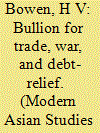

|
|
|
|
|
| Publication |
2010.
|
| Summary/Abstract |
This paper provides the first detailed assessment of British exports of silver to Asia during the initial phase of imperial expansion in India. It demonstrates that, contrary to the views of some historians, exports of silver were at times very considerable, notably after 1785, when they were used to fund war and debt-relief in India, as well as for trade. Focus is on the East India Company, but attention is paid to private exports, to British transfers of silver around Asia, and the paper ends with an analysis of 'reverse' flows to Britain established after 1810.
|
|
|
|
|
|
|
|
|
|
|
|
|
|
|
|
| 7 |
ID:
116622
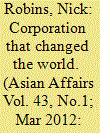

|
|
|
|
|
| Publication |
2012.
|
| Summary/Abstract |
For over 200 years the East India Company was the world's largest corporation. Set up as a merchant trading house in 1600, it became a permanent joint stock company in 1657, the forerunner of the modern multinational. The tension between investment and speculation was reflected in a share price which rose and fell with its fortunes. In the beginning bullion was brought from Britain to pay for Indian goods, which were then shipped to Britain. But in 1766, not long after Clive's victory at the battle of Plassey, the Company acquired the diwani, the right to collect the taxes, in Bengal. A situation of "unrequited trade" was thus established. Suddenly the profits from tax collecting more than covered the cost of trade goods. The dividend, jumped from six per cent in 1766 to 12 per cent in 1769. The shares soared. Then the Company's position in South India was threatened and the share price collapsed. The Company had overwhelming debts, but was judged "too big to fail". It had to be bailed out by the British government, which in return secured the right to nominate representatives to the Bengal Council. Corruption and accountability became increasingly important themes. By the time Warren Hastings was Governor-General the company was purchasing vast quantities of tea from China. What could be sold to China in return? Answer: Indian opium. This trade notoriously led to war with China. But by the end of the Second Opium War, the Indian Mutiny had put paid to the Company's rule over India, though the Company continued a financial existence until 1874.
|
|
|
|
|
|
|
|
|
|
|
|
|
|
|
|
| 8 |
ID:
052802
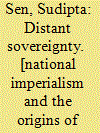

|
|
|
|
|
| Publication |
New York, Routledge, 2002.
|
| Description |
xxxi, 216p.Hbk
|
| Standard Number |
0415929539
|
|
|
|
|
|
|
|
|
|
|
|
Copies: C:1/I:0,R:0,Q:0
Circulation
| Accession# | Call# | Current Location | Status | Policy | Location |
| 048343 | 954.03/SEN 048343 | Main | On Shelf | General | |
|
|
|
|
| 9 |
ID:
049012
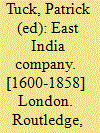

|
|
|
|
|
| Publication |
London, Routledge, 1998.
|
| Description |
v1(xiv, 355p.); v2(239p.);v3(xxxi, 375p.); v4(xiv, 245p.); v5(xiv, 245p.); v6(ix, 374p.)hbk
|
| Contents |
v1: England's Quest of Eastern Trade
v2: Problems of Empire
v3: Considerations on India Affairs
v4: Trade, Finance and Powr
v5: Warfare, Expansion and Resistance
v6: The East India Company 1784-1834
|
| Standard Number |
0415155177
|
|
|
|
|
|
|
|
|
|
|
|
Copies: C:6/I:0,R:0,Q:0
Circulation
| Accession# | Call# | Current Location | Status | Policy | Location |
| 039895 | 954.031/TUC 039895 | Main | On Shelf | General | |
| 039896 | 954.031/TUC 039896 | Main | On Shelf | General | |
| 039897 | 954.031/TUC 039897 | Main | On Shelf | General | |
| 039898 | 954.031/TUC 039898 | Main | On Shelf | General | |
| 039899 | 954.031/TUC 039899 | Main | On Shelf | General | |
| 039900 | 954.031/TUC 039900 | Main | On Shelf | General | |
|
|
|
|
| 10 |
ID:
165775
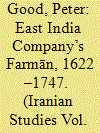

|
|
|
|
|
| Summary/Abstract |
The East India Company’s presence and ongoing trade in Persia was reliant on the privileges outlined in the Farmān, granted after the capture of Hormuz in 1622. The relationship between these two powers was cemented in the rights enshrined in the Farmān, which was used by both to regulate their varying needs and expectations over the course of 125 years. This article explores the Company’s records of the Farmān and how changes to its terms were viewed from both sides. As a Persian document, the Farmān gives a clear view of the attitudes of native officials and rulers to the Company and how these terms were used as a means of control.
|
|
|
|
|
|
|
|
|
|
|
|
|
|
|
|
| 11 |
ID:
153015
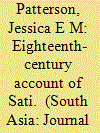

|
|
|
|
|
| Summary/Abstract |
Writing in the period 1765–79, John Zephaniah Holwell, temporary governor of Bengal, was one of the first British writers to attempt a scholarly engagement with Hinduism. Despite being an important source for several Enlightenment writers, his work has been misrepresented by current scholarship. In particular, his account of ‘voluntary sacrifice’, or sati, has been misunderstood as an example of eighteenth-century rationalism. This article will correct this by situating the account in a much fuller appreciation of Holwell's ‘project’, which can be broadly understood as an attempt to reconcile his own heterodox Christianity with what he termed ‘Gentoo’ doctrines. It will show how Holwell's insistence on the essential truth of ‘metempsychosis’ reveals an account of sati that is far more invested in presenting a particular reading of Indian religious principles than has hitherto been appreciated. This analysis challenges certain assumptions in the historiography of eighteenth-century European encounters with India, with a particular emphasis on intellectual culture.
|
|
|
|
|
|
|
|
|
|
|
|
|
|
|
|
| 12 |
ID:
114910
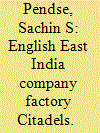

|
|
|
| 13 |
ID:
095238
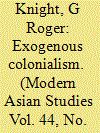

|
|
|
|
|
| Publication |
2010.
|
| Summary/Abstract |
This paper discusses the commercial history of the Java sugar industry in the interwar decades of the 1920s and 1930s. Java's late colonial industry had a uniquely exogenous character, in that, amongst the world's major producers of cane sugar in the late colonial era, it was singularly devoid of metropolitan or quasi-metropolitan markets. Instead, it sought its markets pre-eminently on the Asian 'mainland' to its north and northwest. The Indian subcontinent formed one such market, but East Asia formed the second, and it is the Java industry's fortunes in China and Japan that provide the focus of the present paper. This focus highlights the extent to which the partial collapse of the industry in the mid-1930s related to factors altogether more complex than a simple fall in consumption and drop in prices associated with the interwar Depression. Fundamentally, it was evolving economic autarchy throughout east Asia, encouraged by Depression conditions, which lay at the heart of the Java sugar industry's problems in this sector of its market. Key factors were Java's ambivalent relationship with an expanding but crisis-ridden Japanese sugar 'empire,' and the effect on its long-standing links with British sugar refineries in Hong Kong because of the latter's increasing difficulties in the China market. In tandem, they underscored the commercial hazards inherent in Java sugar's exogenous situation.
|
|
|
|
|
|
|
|
|
|
|
|
|
|
|
|
| 14 |
ID:
191065
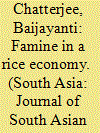

|
|
|
|
|
| Summary/Abstract |
This paper analyses the conjuncture of factors that led to famines in late eighteenth century Bengal, a province in which, due to the fluvial ecology and monsoonal climate, the cultivation of rice predominated. I demonstrate that the exclusive dependence on rice crops created conditions of agricultural insecurity, which in turn was taken advantage of by merchants and hoarders of grain in a bid to profit from artificially enhanced prices. The East India Company, acquiring political authority in Bengal in the mid eighteenth century, was unable to break through the monopolies of the grain dealers. In addition, its experiment with grain storage in large public granaries (golas), intended to overcome food shortages, also failed on account of mounting costs and the irrevocable tension between laissez-faire and state interventionism, which ultimately led to the abandonment of the granary system. I argue that a combination of rice monoculture, mercantile strategies, and lack of effective state intervention was ultimately responsible for transforming natural calamities and the ensuing food shortages into full-scale famines in Bengal in the eighteenth century.
|
|
|
|
|
|
|
|
|
|
|
|
|
|
|
|
| 15 |
ID:
114658
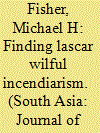

|
|
|
|
|
| Publication |
2012.
|
| Summary/Abstract |
From the 1790s to the 1850s, three dozen major merchant ships burned in India's important ports. Panic-stricken British shipowners, merchants and East India Company officials apprehended disruption of their intercontinental trade, so vital to the burgeoning British Empire. In all these cases, they accused Indian seamen (lascars) of selfish ship-burning. As a context, the lascars had, for centuries prior to European arrival in the Indian Ocean, worked collectively under their own petty officers. They and Indian recruiters in each port had long resisted colonial efforts to appropriate their maritime labour system. Britons used this half-century of alleged arson to finally impose British controls over lascar recruitment ashore and conditions of service aboard ships.
|
|
|
|
|
|
|
|
|
|
|
|
|
|
|
|
| 16 |
ID:
053548
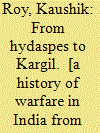

|
|
|
|
|
| Publication |
New Delhi, Manohar Publishers, 2004.
|
| Description |
283p.hbk
|
| Standard Number |
8173045437
|
|
|
|
|
|
|
|
|
|
|
|
Copies: C:1/I:0,R:0,Q:0
Circulation
| Accession# | Call# | Current Location | Status | Policy | Location |
| 048560 | 954.052/ROY 048560 | Main | On Shelf | General | |
|
|
|
|
| 17 |
ID:
090317
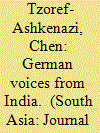

|
|
|
| 18 |
ID:
001340
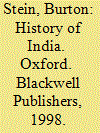

|
|
|
|
|
| Publication |
Oxford, Blackwell, 1998.
|
| Description |
xvi, 432p.
|
| Series |
Blackwell History of the World
|
| Standard Number |
0631205462
|
|
|
|
|
|
|
|
|
|
|
|
Copies: C:1/I:0,R:0,Q:0
Circulation
| Accession# | Call# | Current Location | Status | Policy | Location |
| 040852 | 954/STE 040852 | Main | On Shelf | General | |
|
|
|
|
| 19 |
ID:
140198
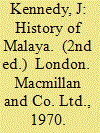

|
|
|
|
|
| Edition |
2nd ed.
|
| Publication |
London, Macmillan and co. Ltd., 1970.
|
| Description |
xi, 364p.: maps, platespbk
|
|
|
|
|
|
|
|
|
|
|
|
Copies: C:1/I:0,R:0,Q:0
Circulation
| Accession# | Call# | Current Location | Status | Policy | Location |
| 004825 | 959.5/KEN 004825 | Main | On Shelf | General | |
|
|
|
|
| 20 |
ID:
130653
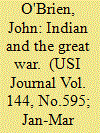

|
|
|
|
|
|
|
|